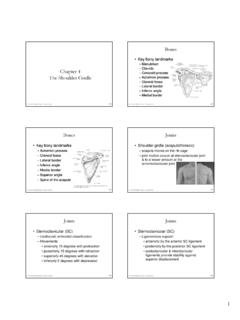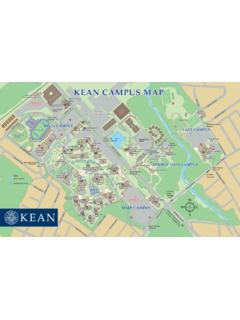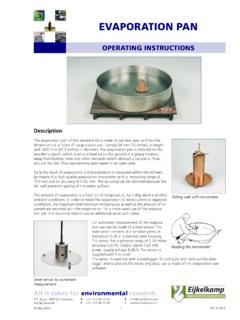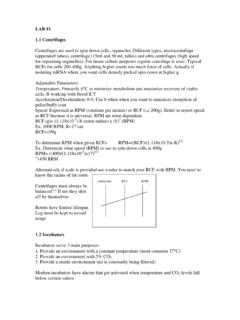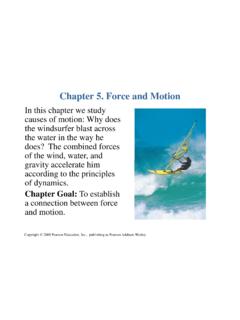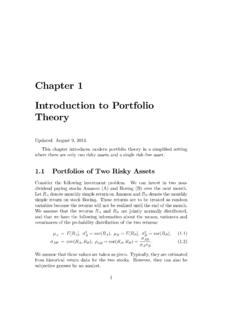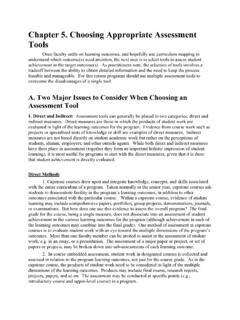Transcription of Chapter 8 Muscular Analysis of Upper Extremity Exercises
1 1 2007 McGraw-Hill Higher Education. All rights reserved. 8-1 Chapter 8 Muscular Analysis of Upper Extremity ExercisesManual of Structural Floyd, EdD, ATC, CSCS 2007 McGraw-Hill Higher Education. All rights reserved. 8-2 Muscular Analysis of Upper Extremity Exercises Upper Extremity -often one of body's weakest areas Strength & endurance in shoulder area Essential for improved app eara nce & posture More efficient skill performanc e Specific conditioning exercis es & activities should be intellige ntly selected 2007 McGraw-Hill Higher Education.
2 All rights reserved. 8-3 Upper Extremity Activities Upper Extremity Limited use in modern c ulture Weakness can impair skill dev el opment & performance in commo n recreat ional activities Appropriate base of muscul ar strength & endurance essenti al for injury p revention & adequate skill devel opment 2007 McGraw-Hill Higher Education. All rights reserved. 8-4 Upper Extremity Activities Typical weight room Exercises concentrate onnlyon anterior shoulder Without balanced approach may lead to strong & tight anterior muscles with weak & flexible muscles posteriorly Analysis of Exercises is critical to appropriate exercise prescription 2007 McGraw-Hill Higher Education.
3 All rights reserved. 8-5 Concepts for Analysis Important to understand Muscles are usually grou ped to gether according to their conce ntric fun ction Muscles work in paired op positi on to an antagonistic group Aggregatemuscle grou ping activity e xample Elbow flexors work together as an agonist group to cause flexion in opposition to the triceps brachii & anconeus (elbow extensors) In this example elbow extensor are cooperating in their lengthening to allow the flexors to perform their task 2007 McGraw-Hill Higher Education.
4 All rights reserved. 8-6 Concepts for Analysis Muscles work in paired op positi on to an antagonistic group Aggregatemuscle grou ping activity e xample In doing so, the triceps & anconeus may or may not be under tension If there is no tension, then the lengthening is passive caused totally by the elbow flexors If there is tension, then the elbow extensors are contracting eccentrically to control the amount & speed of lengthening Dependi ng, th ese same muscle grou ps can function t o control th e exact opp osite actions by contracting eccentrically2 2007 McGraw-Hill Higher Education.
5 All rights reserved. 8-7 Concepts for Analysis From viewing an activity Determine which muscles ar e p erforming the movement Know what type of contraction i s occurring Know what kind of Exercises ar e appropriate for dev eloping the muscles 2007 McGraw-Hill Higher Education. All rights reserved. 8-8 Analysis of Movement Analyzing various Exercises & sport skills Break down all movements into phases Number of phases varies, usually 3 - 5 All sport skills will have at least Preparatory phase Movement phase Follow-through phase Many begin with a stance phase & end with a recovery phase 2007 McGraw-Hill Higher Education.
6 All rights reserved. 8-9 Analysis of Movement Phase names varies from skill to skill to fit the various sports terminology Names may vary depending upon body part involved Major phases may also be divided even further Ex. Baseball pitching preparatory phase is broken into early cocking & late cocking 2007 McGraw-Hill Higher Education. All rights reserved. 8-10 Analysis of Movement Stance phase Allows athlete to assume a comfortable & balanced body position from which to initiate the sport skill Emphasis is on setting various joint angles in correct positions with respect to one another and to sport surface Relatively static phase with fairly short ranges of motion involved 2007 McGraw-Hill Higher Education.
7 All rights reserved. 8-11 Analysis of Movement Preparatory phase Often referred to as cocking or wind-up phase Used to lengthen the appropriate muscles so that they will be in position to generate more force & momentum when concentrically contract in next phase Most critical phase in leading toward the desired result of activity Becomes more dynamic as need for explosiveness increases 2007 McGraw-Hill Higher Education. All rights reserved. 8-12 Analysis of Movement Movement phase Sometimes known as acceleration, action, motion, or contact phase Is the action part of the skill Summation of force is generated directly to the ball, sport object, or opponent Usually characterized by near-maximal concentric activity in involved muscles3 2007 McGraw-Hill Higher Education.
8 All rights reserved. 8-13 Analysis of Movement Follow-through phase Begins immediately after climax of movement phase Brings about negative acceleration of involved limb or body segment Often referred to as the deceleration phase Body segment velocity progressively decreases over a wide range of motion Usually attributable to high eccentric activity in muscles that were antagonist to muscles utilized in movement phase 2007 McGraw-Hill Higher Education. All rights reserved. 8-14 Analysis of Movement Follow-through phase Generally, the greater the acceleration in the movement phase, the greater the length & the importance of the follow-though phase Some athletes may begin follow-through too soon Inappropriately cuts short the movement phase Have less than desirable result in activity 2007 McGraw-Hill Higher Education.
9 All rights reserved. 8-15 Analysis of Movement Recovery phase used after follow-through to regain balance & positioning to be ready for the next sport demand To a degree, muscles used eccentrically in follow-through phase to decelerate the body or body segment will be used concentrically in recovery to bring about the initial return to a functional position 2007 McGraw-Hill Higher Education. All rights reserved. 8-16 Analysis of Movement Baseball pitch skill Analysis Stance phase begins when player assumes a position with ball in glove before receiving signal from catcher Pitcher begins preparatory phase by extending throwing arm posteriorly & rotating trunk to the right in conjunction with left hip flexion Right shoulder girdle is fully retracted in combination with abduction & maximum external rotation of glenohumeral joint to complete this phase 2007 McGraw-Hill Higher Education.
10 All rights reserved. 8-17 Analysis of Movement Baseball pitch skill Analysis Immediately following, movement phase begins with forward movement of arm & continues until ball release Follow-through phase begins at ball release as arm continues moving in same direction established by movement phase until velocity decreases to point that arm can safely change movement direction Deceleration of body & especially the arm is accomplished by high amounts of eccentric activity 2007 McGraw-Hill Higher Education.

